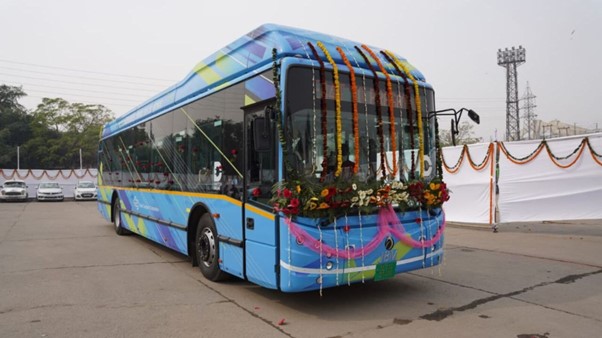Delhi, India – In a significant move toward enhancing its public transport infrastructure and curbing pollution, Delhi is poised to welcome 100 new electric buses to its fleet later this month. This initiative will raise the number of government-owned electric buses to a total of 900, according to officials familiar with the matter, as announced on Monday.
Transport Minister Kailash Gahlot shared, “Final preparations and formalities for the induction of these 100 electric buses are currently underway. We anticipate their introduction sometime in October. By the close of this year, our goal is to have a fleet of 1,900 e-buses. Delhi already boasts the largest e-bus fleet in the nation. Over the past couple of years, the Delhi government has taken substantial steps to introduce electric buses on a significant scale, a crucial measure to combat air pollution.”
An official from the transport department confirmed, “The 100 new electric buses have already arrived in the capital and are in the final stages of induction.”
Just last month, Lieutenant Governor (LG) VK Saxena and Chief Minister Arvind Kejriwal ceremoniously flagged off 400 e-buses from the Rohini bus depot. The performance of these 400 electric buses has been deemed satisfactory over the past month. They have consistently met the department's expectations, contributing to the reduction of the Delhi Transport Corporation's carbon footprint while offering enhanced convenience to passengers.
According to a 2016 study by the Indian Institute of Technology Kanpur, vehicular emissions accounted for approximately 9% of the PM10 load and around 20% of the PM2.5 concentration in Delhi. Particulate matter, or PM, poses severe health risks when inhaled, leading to respiratory problems.
As part of a comprehensive strategy to combat pollution, the Delhi government aspires to expand its bus fleet to a total of 11,000 vehicles, to ensure that 80% of all public buses operate on electric power by the year 2025-26. This ambitious plan underscores Delhi's commitment to improving air quality and creating a more sustainable urban environment for its residents.






